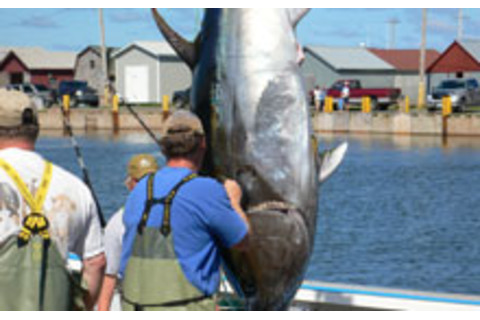
Young bluefin tuna travel the wide, blue, Atlantic Ocean much more extensively than researchers had previously realized, and the new findings should influence how the declining tuna fisheries are managed, researchers say. According to a new study, juvenile tuna born in the Gulf of Mexico and in the Mediterranean both swim to the waters off the mid-Atlantic coast, where they mingle for a while before returning to their native grounds to breed. Researchers used the chemical composition of the fishes' inner ears to determine which marine ecosystem they were born in, and found that nearly 60 percent of juvenile bluefin tuna off the coast of Maryland had come all the way from the Mediterranean.
"If you are a fisherman from Maryland going out and seeing lots of juvenile bluefin tuna, you might think the population is fine," [lead researcher David] Secor says. "But when you realise they are being subsidised from the Mediterranean, it gives you a different perspective" [New Scientist].
The researchers looked specifically at a bone-like structure in the fish ear
called the otolith, a calcium-carbonate deposit that is laid down after a fish hatches. These carry different concentrations of oxygen isotopes depending on whether the fish developed in cool Mediterranean waters – eastern bluefin – or warmer Gulf waters, which spawn western bluefin. "It's a birth certificate that we can retrieve during any phase of the fish's life and determine where they spent their first year," says Secor [New Scientist].
Researchers hope that the findings, published in Science [subscription required], will change the way the tuna fishery is managed, and note that the International Commission for the Conservation of Atlantic Tunas is scheduled to review the management plan at a meeting this November.
Because Atlantic bluefins have spawning grounds on both sides of the Atlantic (and perhaps in the middle, some scientists say) management agencies have treated them as two distinct populations: western bluefins that spawn in and near the Gulf of Mexico, and eastern bluefins that spawn in the Mediterranean. While scientists have known for several years that these populations mix, their socializing hasn’t been incorporated into management strategies [Science News].
Image: Jay R. Rooker Related Post: To Save the Fish in the Sea, Give Fishers a Financial Share













